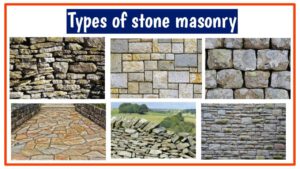Colorado Springs Masonry refer to the construction and repair of brick, stone, and concrete blocks. Masonry professionals build and repair chimneys, walls, and other functional or fancy structures.

The mortar that binds bricks together must be well mixed and placed. If not, water infiltration occurs and leads to the deterioration of the wall system.
Masonry is a construction technique that involves building with brick, stone, or concrete blocks and mortar. The strength and durability of masonry depend on the quality of materials used, the craftsmanship of a mason or bricklayer, and the pattern in which the building units are assembled. Masonry is a heavy material, and it requires a strong foundation like reinforced concrete to avoid settling or cracking over time.
Masonry structures provide a sturdy, energy-efficient structure for homes and businesses, especially in areas subject to hurricanes or tornadoes. Its non-combustible nature improves fire protection for occupants, making it safer to be inside during a disaster. Masonry also resists changes in weather conditions, including the freezing and thawing of water.
The density of brick, concrete block, and stone increases the thermal mass of a structure, helping to keep interior spaces warmer or cooler. This improves a building’s energy efficiency, which cuts down on heating and cooling costs for the owner and occupants of the space. Masonry is also soundproof, reducing the pressure from noises such as passing cars or trains. This makes it easier to concentrate in a busy office or workplace.
Concrete block masonry is often used as a base for walls of stone or brick, but it can also be used in standalone structures such as fireplaces and fountains. It is usually more cost-effective than a reinforced concrete slab since the structural brick or stone above it doesn’t need to be as thick. Concrete block masonry is made from a mix of cement, water, and aggregate. It is usually gray, although it can be painted to match other colors or the style of a building.
Some of the disadvantages of using masonry in a home or business are its weight and labor costs. Brick, concrete block, and stone are large and bulky, which can take up a lot of floor space. The masonry also limits the flexibility of interior layouts because it’s hard to reposition shelves or furniture against its thick walls. Masonry is also expensive to repair, and periodic maintenance is necessary to extend its lifespan.
Stability
Masonry structures are generally characterized by the presence of many elements, all of which must be accounted for in an accurate stability analysis. This is particularly important for masonry columns and piers, where the combination of a non-linear gross stress-strain law in compression, limited tensile strength, and induced slenderness due to crack formation all contribute to stability problems. In the past, a range of analytical models and numerical approaches were developed to address these effects. However, one of the most widely used methods, thrust line analysis (TLA), carries some assumptions that can lead to a conservative assessment of stability.
TLA is a geometric-based method of analyzing masonry vaults. The method focuses on the stability of the structural prism under a combined load of vertical and lateral forces. To this end, the deflections of the vault and the failure point at which the structural prism collapses are determined by solving the stability problem with respect to different load cases. The results obtained with TLA are compared to those of the discrete element model (DEM), and the influence of different input parameters is examined.
In order to be effective, TLA requires that the dimensions of the concrete masonry units be accurate. It also assumes that the footing is a concrete structure, although beds of compacted gravel or crushed stone can also work. Footings are always wider than the walls that they support to spread the weight of the masonry above over a larger area and prevent the wall from sinking into the ground unevenly.
Load-bearing masonry walls are typically reinforced both horizontally and vertically with steel bars or rods. The size, number, and spacing of these reinforcements vary depending on the wall’s height and load capacity. Helical ties are also often used to provide additional structural integrity. These lengths of twisted stainless steel are installed either perpendicularly or parallel to masonry assemblies and can be utilized for a variety of stabilization applications, such as securing multiple wythes of masonry together, stitching cracks, and pinning lintels and arches.
Construction of buildings with masonry can take longer than structures built from other materials, such as wood or concrete. This is because masonry is constructed using mortar, which must be mixed on site. If weather conditions are unfavorable, such as downpours or very cold temperatures, the construction process may be delayed until conditions improve. This can increase the cost of building a property with masonry.
Aesthetics
Masonry is a material capable of expressing a wide variety of architectural styles. Its aesthetic impact can be enhanced by inventive use of unit size, shape, and surface finish; color of both units and mortar; and concrete masonry bond patterns.
The use of masonry as a decorative element rather than merely for structural support is becoming increasingly popular. Masonry is also a good choice for providing contrast to other materials. It can also help enhance a building’s natural environment, such as a waterway or grove of trees.
In most applications, a building’s structure is encased in a finish material such as brick, stone, or concrete block. This finish material is then rendered to give it a pleasing appearance and to protect the underlying masonry from weathering. The resulting wall is then often decorated with ornamental features, such as corbels or capitals.
While masonry has long been an effective construction material, advances in technology and production techniques have made it even more appealing from an aesthetic standpoint. The availability of a more diverse range of concrete masonry units, colorants, and finishes has allowed designers to create walls that evoke a sense of strength, modernity, tradition, or even whimsy.
Concrete masonry units are typically constructed of natural aggregates that have a tendency to vary in color and texture. When a more uniform visual appearance is desired, mineral pigments may be used to produce integrally colored concrete masonry units. In addition to producing a more consistent appearance, the use of pigments can reduce the need for frequent maintenance of masonry finish systems.
Since the early days of freemasonry, its symbols have been used to convey moral lessons in an approach that has been referred to as “a system of morality, veiled in allegory and illustrated by symbols.” Some of the more familiar Masonic symbols are the square and compasses, the working tools of an accepted Mason, and King Solomon’s Temple.
The International Building Code and masonry design standards such as ASTM C90 provide for site tolerances that allow some deviations in the construction of a masonry wall without impacting its structural performance. However, these tolerances do not address issues of aesthetics. When tighter tolerances are required for a specific project, the design team should consider alternative solutions for maintaining the structural integrity of the wall while achieving an acceptable aesthetic appearance.
Space
Masonry is a popular content type for pages because it allows you to fit a lot of content into a small space. This gives it a nice, clean look and can be helpful in getting important information to the readers quickly and easily.
The masonry content type was originally designed to feature masonry image tiles: large images that, when the user hovers over them (or taps on them on mobile devices), display a color overlay with an optional headline, text, and link so that you can provide additional information and context about the photo. This type of layout is especially useful for pages with a lot of content or if you want to create a page that is designed to be scrolled.
You can use the masonry content type to create grid-based layouts. The grid is made up of rows that can be configured in various sizes, and you can specify how wide each row should be. You can also decide whether to have gaps between the rows and, if so, how much of a gap to have. The masonry content type can also determine how many columns to have in each row, and it can also be used with different gutter widths depending on the needs of the layout.
As with any grid layout, the masonry layout can be enhanced with additional CSS properties to control how the items are laid out. There is an experimental property called masonry-auto-flow that you can use to tell the plugin to ignore any items with definite placement and lay them out using order-modified document order instead, which makes it behave more like the regular grid auto-placement that happens in browsers that do not support masonry.
Another option is to use the masonry-justify-tracks property to tell the plug-in to align the tracks of the grid and place any masonry items between them. This helps to keep the overall grid structure consistent and enables you to create more even spaces between the tracks of your masonry grid. These extra options make the masonry content type even more flexible and powerful than the standard grid layout and will continue to evolve as designers explore its capabilities.


